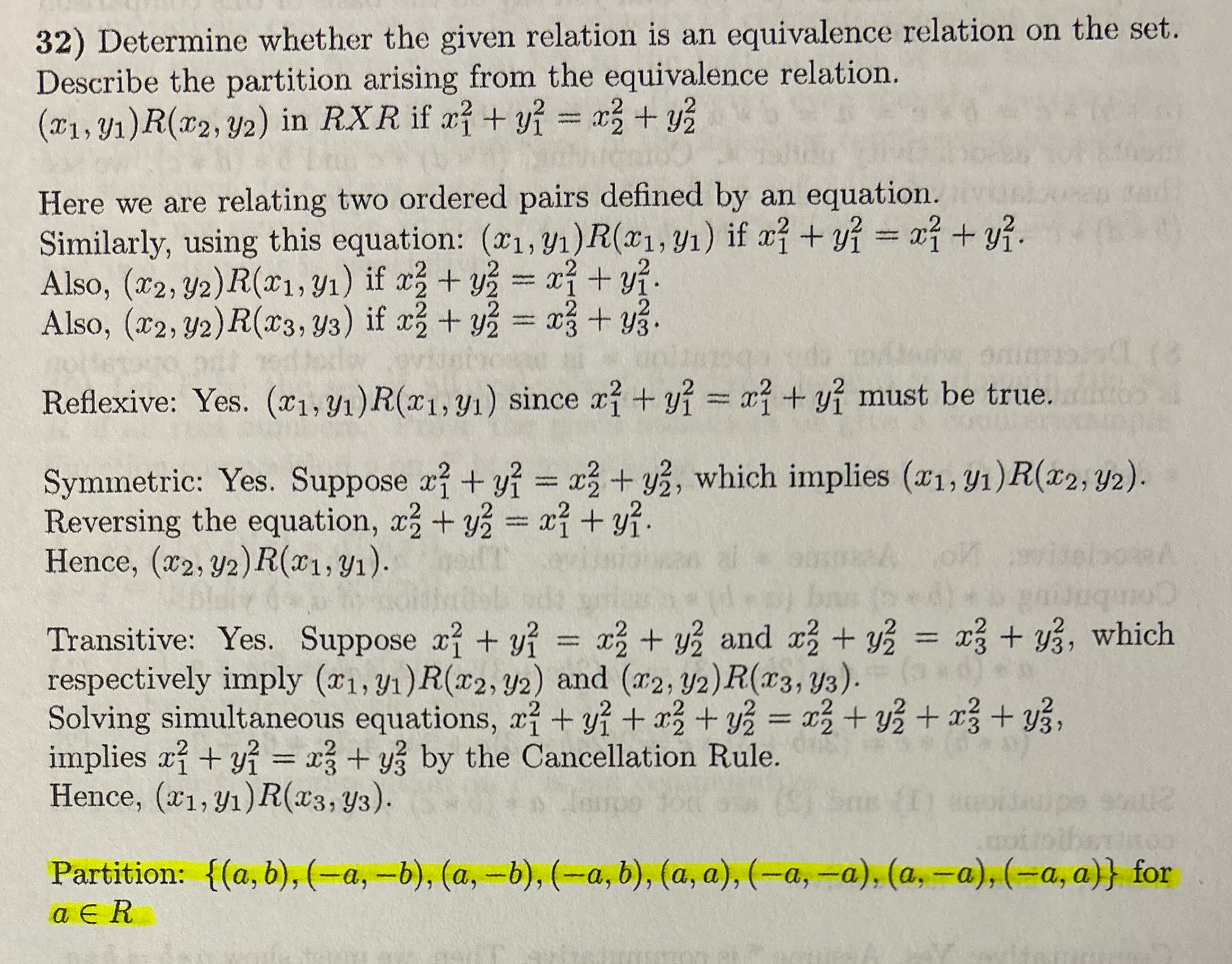Answered step by step
Verified Expert Solution
Question
1 Approved Answer
32) Determine whether the given relation is an equivalence relation on the set. Describe the partition arising from the equivalence relation. (x1,y1)R(x2, y2) in

32) Determine whether the given relation is an equivalence relation on the set. Describe the partition arising from the equivalence relation. (x1,y1)R(x2, y2) in RXR if x + y = x + y Here we are relating two ordered pairs defined by an equation. Similarly, using this equation: (x1,y1)R(x1,y1) if x + y = x + y. Also, (x2, y2) R(x1,y1) if x Also, (x2, y2) R(x3, y3) if x + y = x + y. + y = x + y. Reflexive: Yes. (x1,y1) R(x1,y1) since x + y = x + y must be true. Symmetric: Yes. Suppose x + y = x + y2, which implies (x1,y1)R(x2, y2). Reversing the equation, x + y = x + y. Hence, (x2, y2) R(x1,y1). (3 Transitive: Yes. Suppose x + y = x + y and x + y = x + y, which respectively imply (x1,y1)R(x2, y2) and (x2, y2) R(x3, Y3). (6) Solving simultaneous equations, x + y + x + y = x+y+x+y, implies x + y = x + y by the Cancellation Rule. Hence, (x1,y1) R(x3, Y3). Partition: {(a, b), (-a, b), (a, b), (-a, b), (a, a), (-a, -a), (a, -a), (-a, a)} for a R
Step by Step Solution
There are 3 Steps involved in it
Step: 1

Get Instant Access to Expert-Tailored Solutions
See step-by-step solutions with expert insights and AI powered tools for academic success
Step: 2

Step: 3

Ace Your Homework with AI
Get the answers you need in no time with our AI-driven, step-by-step assistance
Get Started


